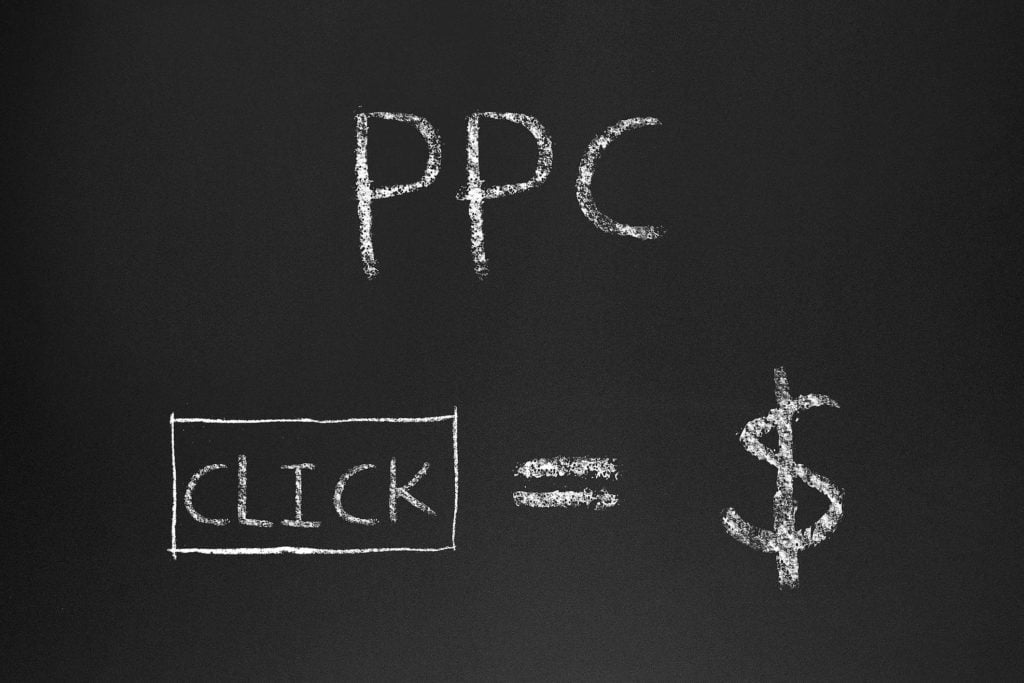Setting your PPC Advertising budget is one of the most important decisions marketers must make when developing their strategies for a PPC Advertising campaign. It’s also among the most challenging ones. The lack of data, absence of a structured approach, or simply not having a clear goal, can all cause you to create a budget that doesn’t help get the most return from advertising bucks.
And there’s a strong incentive to get the budgeting right — Google estimates that $1 spent in Google Ads might generate $8 of profit in return.
Although this “estimate” that Google gives, can be on target or off, it’s critical to set a PPC Advertising budget and keep to it.

So how much should you spend on PPC advertising? Surely, you shouldn’t spend more on getting traffic than that traffic is going to bring back. After all, advertising is all about benefiting a business, and turning a profit is something a business must do. In that sense, you should spend the least possible amount of money that gives you the most results.
This, of course, is a very vague way to answer a complex question. Determining a PPC budget requires having access to data, as well as being able to calculate metrics and, above all, discern the metrics you should focus on from the ones that do very little for you, no matter how buzzworthy they are.
How to Calculate Your PPC Advertising Budget?
The very first thing you need is a goal. People don’t pay for advertising for no reason, they advertise so that they are able to achieve something. You can focus this campaign of lead generation, or on revenue generation. Either way, you need to have a number you’re trying to earn.
In order to achieve that number, you will need to bring a certain amount of traffic to your website, or your landing page. Not every person that lands will convert, so you need to know your website’s conversion rate — how many of your website visitors end up becoming leads. If you’re focusing on revenue generation, it gets a bit more complicated, but we’ll cover that later.
If you want to have 20 new leads, and your website’s conversion rate is 10%, you’ll need 200 people to land on your website in order to get those 20 leads.
Head over to Google Ads Keyword Planner, or the dashboard of your PPC platform of choice. There, you’ll be able to find the average cost per click on a keyword that would bring you the traffic you need.
After making sure there’s enough search volume for the term, go ahead and multiply the number of people that need to land on the website with the cost per click. What you get is your PPC advertising budget.
The PPC Advertising Budget Formulas
In the simplest case where you’re only looking to generate leads, your PPC advertising budget formula would look like this:
Budget = (Leads / CR) x CPC
Let’s say that you need 20 new leads and that your website converts at a rate of 10%. If the average CPC is $5, then your budget would be:
(20 / 0.1) x 5 = $1000
A budget of $1000 should bring you at or very near your goal of 20 new leads. But if you’re not only after leads, and you want to find out how big of a budget you’ll need to get a certain number of new customers, you can do that, too.
Let’s say that half of all leads convert to customers, and you set the goal at 50 new customers. You’d have to add another conversion rate, and you would do it like this:
Budget = (Customers / CR1)/CR2 x CPC
So, you now have a goal of 50 new customers which convert at a rate of 50% from your leads, which convert at a rate of 10% from all website traffic, which costs $5 per click. Your budget to achieve that goal should be:
(50 / 0.5)/0.1 x 5 = $5000
A cool five grand would get you what you need. And if you’re wondering how revenue ties in, you should be able to calculate the average customer value for a certain time period. It could be a monthly value, or you can just use the initial purchase. You would then take the revenue you want to see, divide it by the average customer value for that time period, and get the number of customers you need to attract.
How to Deal With Large CPCs and Determine Profitability
In pay-per-click advertising, the size of your budget depends on some factors that are out of your control. Yes, you are free to set your goals, and you can and should do your best to improve your website’s and sales teams’ conversion and closure rates.
But the average CPC is a value that exists independent of you. In some industries, it can go up to $50, and even more. If we used a $50 average cost per click in the last calculation we did, it would increase the budget to $50,000. That’s a lot of zeros, too many for most businesses.
But there’s a catch — CPC isn’t that important of a metric on its own. It’s only good because it lets us understand more important things, such as how much money we need to spend to achieve certain goals. And if that goal is acquiring customers, then the CPC helps us get to a very useful number — cost per acquisition, or CPA.
In the calculation we use, it costs $5000 to acquire 50 customers. That’s $100 per customers. However, if the customer’s monthly value, or initial purchase, is larger than $100, PPC advertising is making you money. The industries where the average CPCs are around $50 — the financial and legal industries — are also the industries that tend to have larger customer values.
If you’re working with keywords with $50 average CPC, and that balloons your CPA to $1000, it won’t matter because your customers spend $5000 on their first purchase with you. And it won’t matter that you have to spend a five-, six-, or even seven-digit number on advertising. The return on advertising spend, or ROAS makes it worth your while.
Don’t be afraid of setting your PPC Advertising budget
So how much should you really spend on PPC? As much as you see fit, as long as it’s making you money. Don’t let it get you in the red. But don’t let opportunity slip because you’re afraid. It’s a very fine line you need to walk.
ClickGUARD is a data-driven click fraud prevention tool. When marketers know where every click comes from, it empowers their campaigns to achieve maximum results and a more predictable spend. Start your free trial today, or give us a call to learn more about ClickGUARD and what it can do for you.



